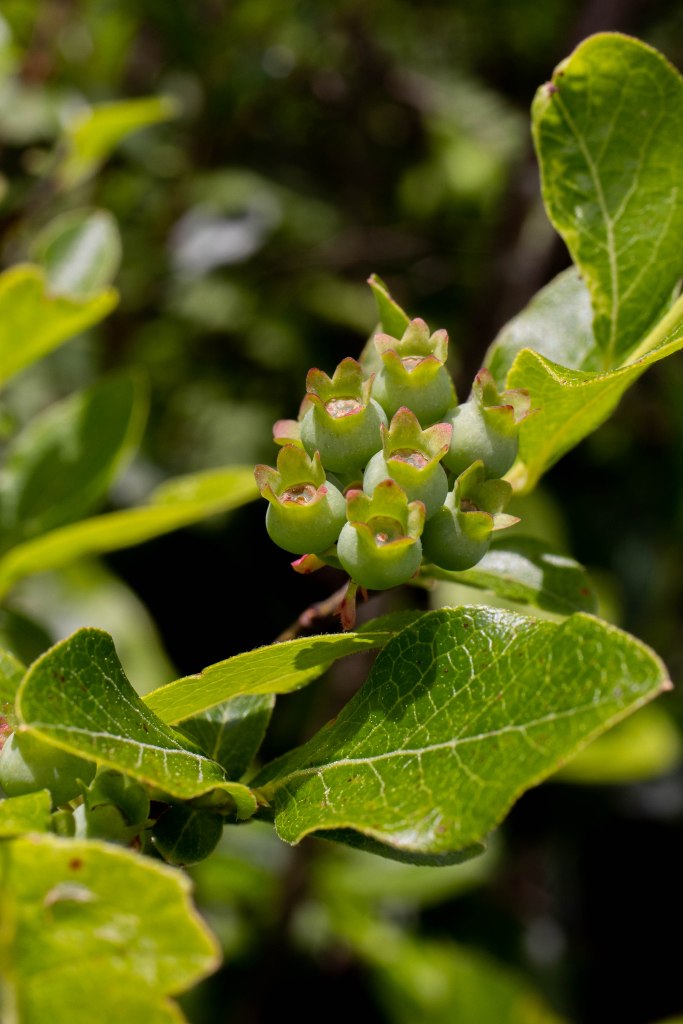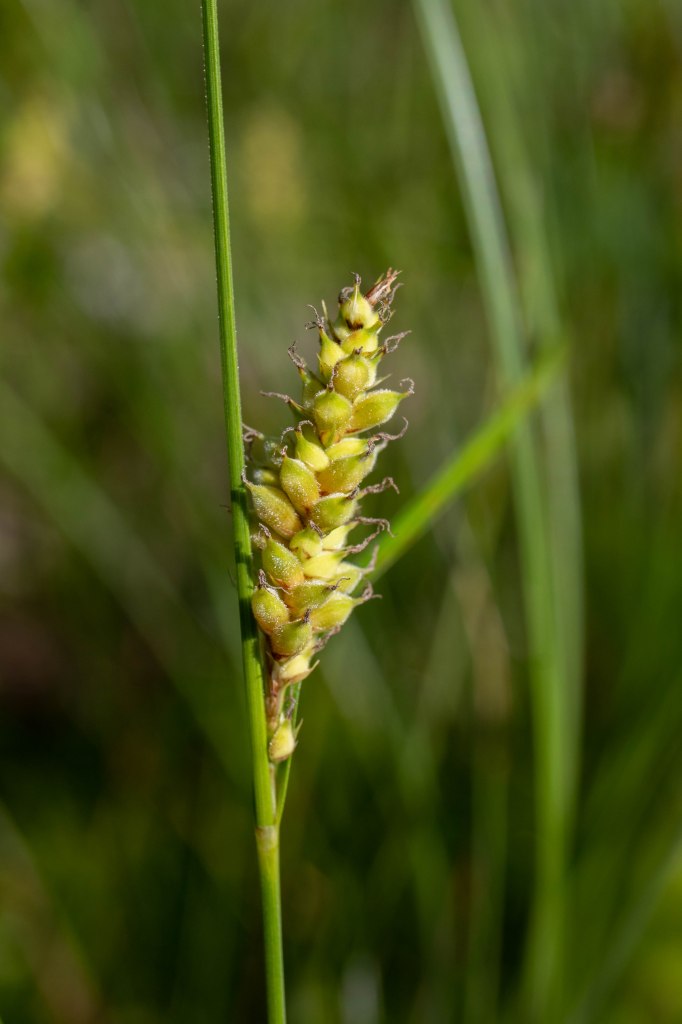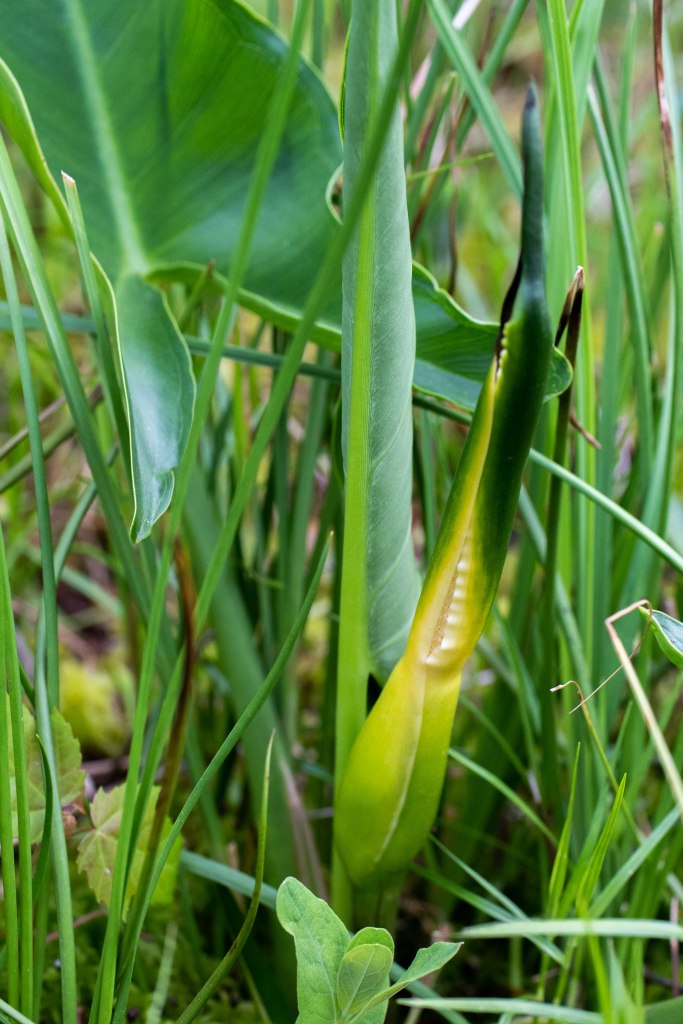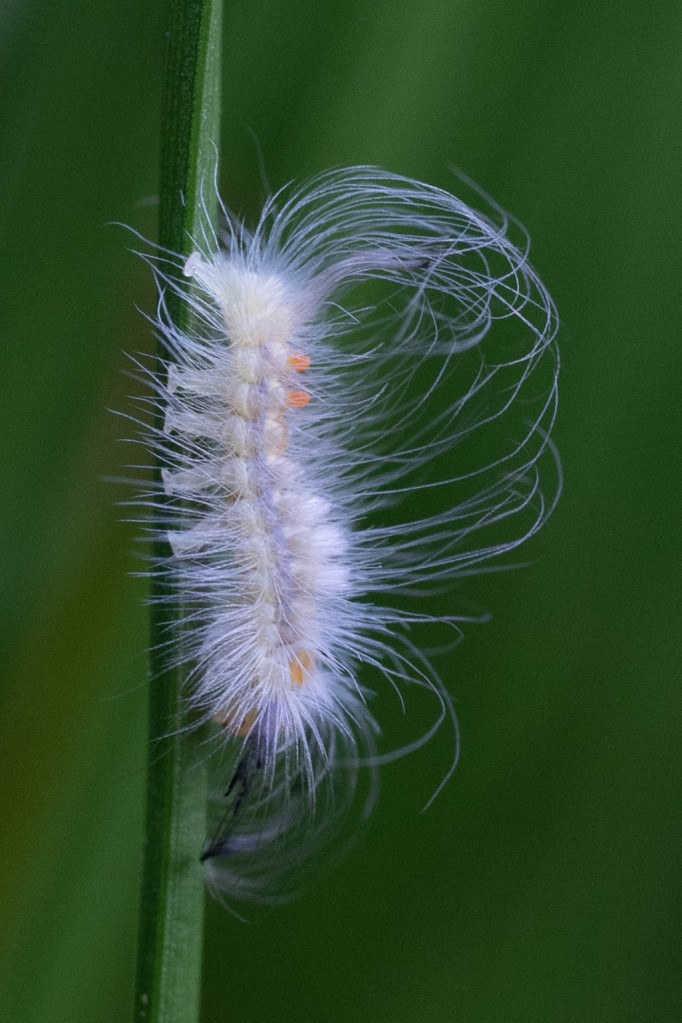A bog is a wetland where plant material has been allowed to accumulate for many years. Bogs are typically fairly acidic and nutrient poor and are often home to plants that do not occur in other areas, even other wetlands. Due to the poor soil in bogs some plants have evolved strategies to get nutrients from other sources, which is why you can often find carnivorous plants in bogs. Almost all bogs contain Sphagnum moss, sedges, and Ericaceous species (members of the blueberry family). The bogs I visited on Sunday had some shared plant species and characteristics, but all were still unique. I visited four bogs in one day. They said it couldn’t be done, but I had a mission to find cool plants and figure out which of these four bogs in Northeastern Ohio is the best bog.
Bog #1: Triangle Lake Bog State Nature Preserve
Triangle Lake Bog SNP is located in Ravenna, Ohio. It is a kettle bog, a type of bog formed by a chuck of ice left behind by a retreating glacier. The ice melts leaving a depression behind which fills with water and in certain conditions, creates a bog. I have visited Triangle Lake Bog several times since moving to Ohio. It is a short easy hike, and it has tons of carnivorous purple pitcher plants (Sarracenia purpurea), the only pitcher plant native to Ohio.

There are around 8 species of North American pitcher plants (genus Sarracenia) and many subspecies and hybrids. These plants have modified pitcher shaped leaves which use sweet smelling nectar used to attract insects. Each pitcher has downward pointing hairs on the inside to make it easier for insects to fall into the pitcher and harder for them to get out. At the bottom of the pitcher, the insects are digested by enzymes released from the pitcher plant and symbiotic bacteria (1). I was lucky enough to catch them in bloom, and their bumblebee-pollinated flowers are just as interesting and beautiful as their leaves (2).
Interestingly, North American pitcher plants are only very distantly related to tropical pitcher plants in the genus Nepenthes despite their striking similarity of form and function. This one of my favorite examples of convergent evolution, where two distantly related organisms share similarities due to adaptations to challenges they face in their environment rather than shared evolutionary history. Australia is home to another group of pitcher plants in the genus Cephalotus which are also only distantly related to Sarracenia or Nepenthes. In Europe, Purple pitcher plants are invasive and negatively impact sensitive insect communities where they occur (3).


I could go on and on about how cool pitcher plants are, but there are other cool plants to mention at Triangle Lake Bog. Highbush blueberry (Vaccinium corymbosum), bog cranberry (Vaccinium oxycoccos), and leatherleaf (Chamaedaphne calyculata) are three very common bog species. All members of the blueberry family, Ericaceae, these plants are well adapted to living in acidic soil. One way ericaceous plants have overcome living in these nutrient poor bog environments is by partnering with mycorrhizal fungi, which are fungi that attach to plant roots in the soil and help the plant to uptake nutrients like nitrogen and phosphorus in exchange for sugars the plants produce through photosynthesis. Many plants engage in these types of beneficial interactions with mycorrhizal fungi but ericaceous plants are well known for their highly specialized relationships with fungi (4).



Bog #2: Tom S. Cooperrider – Kent Bog State Nature Preserve
Like Triangle Lake Bog, Kent Bog SNP is a Kettle bog. This bog is home to one of the southernmost populations of tamaracks (Larix laricina), one of the few coniferous trees which loses its needles in the winter and regrows them each spring. Tamaracks are cold tolerant and able to thrive in bog environments but cannot tolerate shade. They have separate male and female cones. The female seed cones start out reddish pink and turn brown as the season goes on. Tamaracks are limited to the North Eastern region in Ohio but they are much more common in colder, more northern areas.
Another uncommon Ohio tree species at Kent bog is the gray birch (Betula populifolia). As its latin name suggests, the leaves of this tree are very similar to those of poplars, such as cottonwood (Populus deltoides), but there is no mistaking this tree for a poplar when you see the peeling white bark and horizontal lenticels characteristic of birch species. Like Tamaracks, Grey birches are pretty much limited to the northeastern region of Ohio and occur more frequently in New England.



Sphagnum moss is essential to maintaining bog ecosystems. Sphagnum have large empty cells called hyaline cells which can absorb and store a large amount of water. Sphagnum moss is also important to maintaining the acidic conditions necessary for many bog plants to thrive (5). These acidic, low oxygen conditions make it difficult for organisms that break down organic matter to survive, slowing down decomposition and allowing for the accumulation of peat (partially decomposed plant matter) and other organic material. This is why there are sometimes news stories about ancient, eerily well preserved bodies found in bogs (Example: The Tollund Man). Sphagnum moss is also used in horticulture to help retain moisture in soils and decrease soil pH.

Bog #3: Jackson Bog State Nature Preserve
Jackson Bog is actually not a bog but a fen. The main difference between bogs and fens is that while bogs are acidic, fens are alkaline. Additionally, water actively flows through fens, whereas bogs hold and retain rainwater. A helpful way to remember the difference is the mnemonic device “bogs clog and fens flush”. Cedar Bog in Champaign County Ohio is also a misnamed fen, and is where I learned that saying. Thanks Cedar Bog!
Aside from the poison sumac (Toxicodendron vernix), Jackson bog did not share many of the same plants I saw at my first two sites. The most frequent plants I saw are the bane of many botanists, but the beau of bogs and friend of fens; sedges. Now, I love a nice sedge, but unfortunately, I can’t tell very many of them apart so the best I am going to get here is to genus. I wanted to include these even though I don’t know their names because sedges are really important to bog and fen ecosystems. Some fens contain sedge meadows, areas dominated by sedges that are important habitat for wildlife (6).




Bog #4: Brown’s Lake Bog Preserve
At Brown’s Lake Bog Preserve I looked all over for the Rose Pogonia Orchid (Pogonia ophioglossoides) and bog bean (Menyanthes trifoliata) which allegedly grow there, but I wasn’t able to find them. However, I did find tons of round-leaved sundew (Drosera rotundifolia) and pitcher plants. Like pitcher plants, sundews are carnivorous plants that live in nutrient poor bogs and fens. Ohio has just two species of sundew, round-leaved (D. rotundifolia) which is fairly common and occurs across the northern hemisphere, and spoon leaf sundew (D. intermedia) which is rare in Ohio but common in bogs along the east coast. Sundews have long hairs on their leaves which end in sticky globs which attract and trap insects. Once the sundew has ensnared its victim, it rolls up the leaf and excretes digestive enzymes to break down its meal, which it then absorbs. These plants are in the same family as Venus flytraps (Dionaea muscipula). While sundews are not very speciose here in Ohio, they have their center of diversity in Australia, which is home to over 150 species of sundew (7).
Ferns are very common at Brown’s Lake Bog including Royal Fern (Osmunda regalis), Spinulose Wood Fern (Dryopteris carthusiana), Crested Wood Fern (Dryopteris cristata) and tons of Cinnamon Fern (Osmundastrum cinnamomeum, pictured below). Ferns reproduce using spores rather than seeds. Cinnamon ferns have separate sterile and fertile fronds. The sterile fronds are the leafy green ones, and the fertile fronds are brown and bear the sporangia which produce the spores. Some ferns do not have separate spore bearing fronds and rather produce their sporangia in sori attached to the bottom of otherwise normal looking fronds.


Finally, a sedge even I can identify! Three way sedge (Dulichium arundinaceum) is the only species in its genus and it is pretty distinctive as far as sedges go. It has leaves that are three ranked and hollow stems. It frequently occurs in bogs forming dense mats and spreading clonally through rhizomes. When in flower, inflorescences come out from the axil of each leaf.

So, which bog is best?
FALSE. They are all great. They each receive separate awards.
Triangle Lake Bog: Most pitcher plants, Best view.
Tom S. Cooperrider – Kent Bog: Best trees, Most informative signs.
Jackson Bog: Longest trail, Best sedges, Most deceptive (Not a bog).
Brown’s Lake Bog: Shortest trail, Lumpiest sphagnum, Most sundews, Second most deceptive (Where’s the bog bean??).
Overall, I would say my recommendation is to go to whichever one is closest to you! You might have time to go to more than one in the same day. They were all awesome, and bogs rule.
Additional Bog Photos





